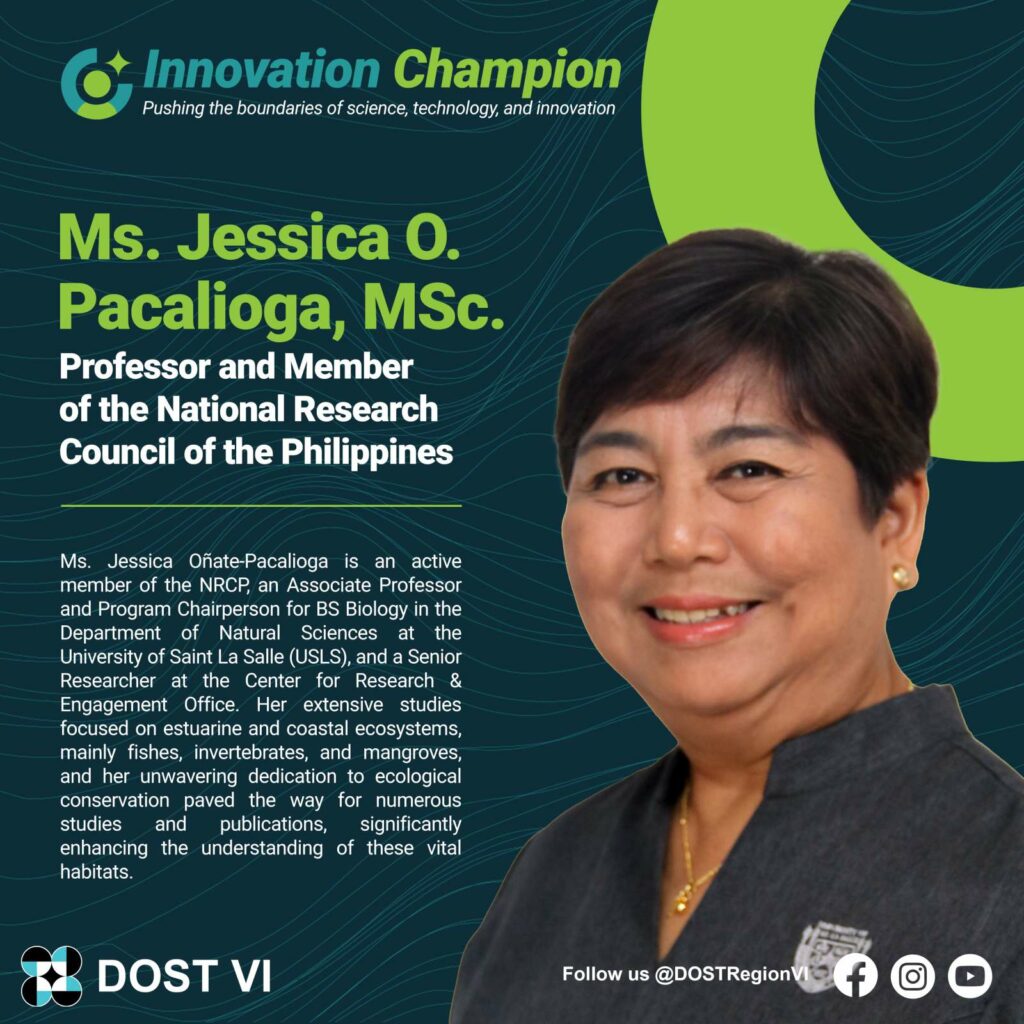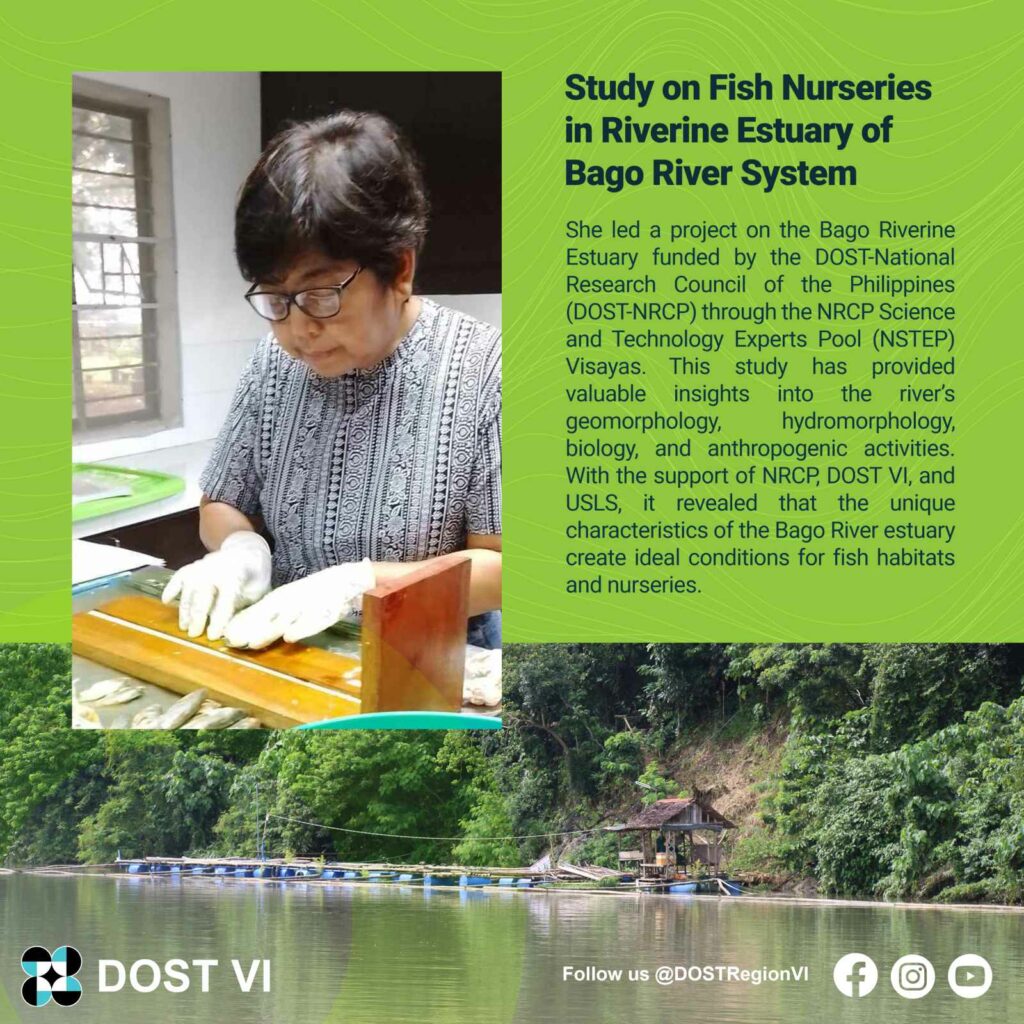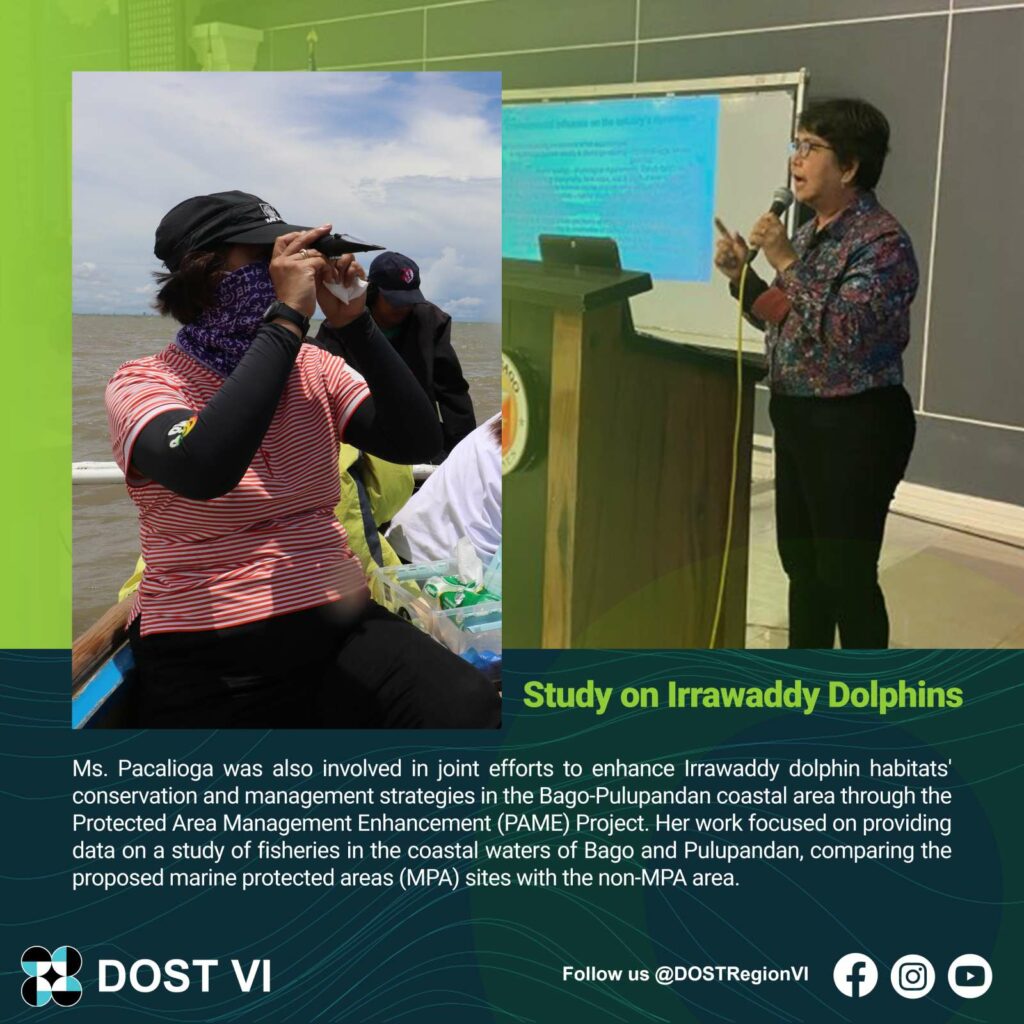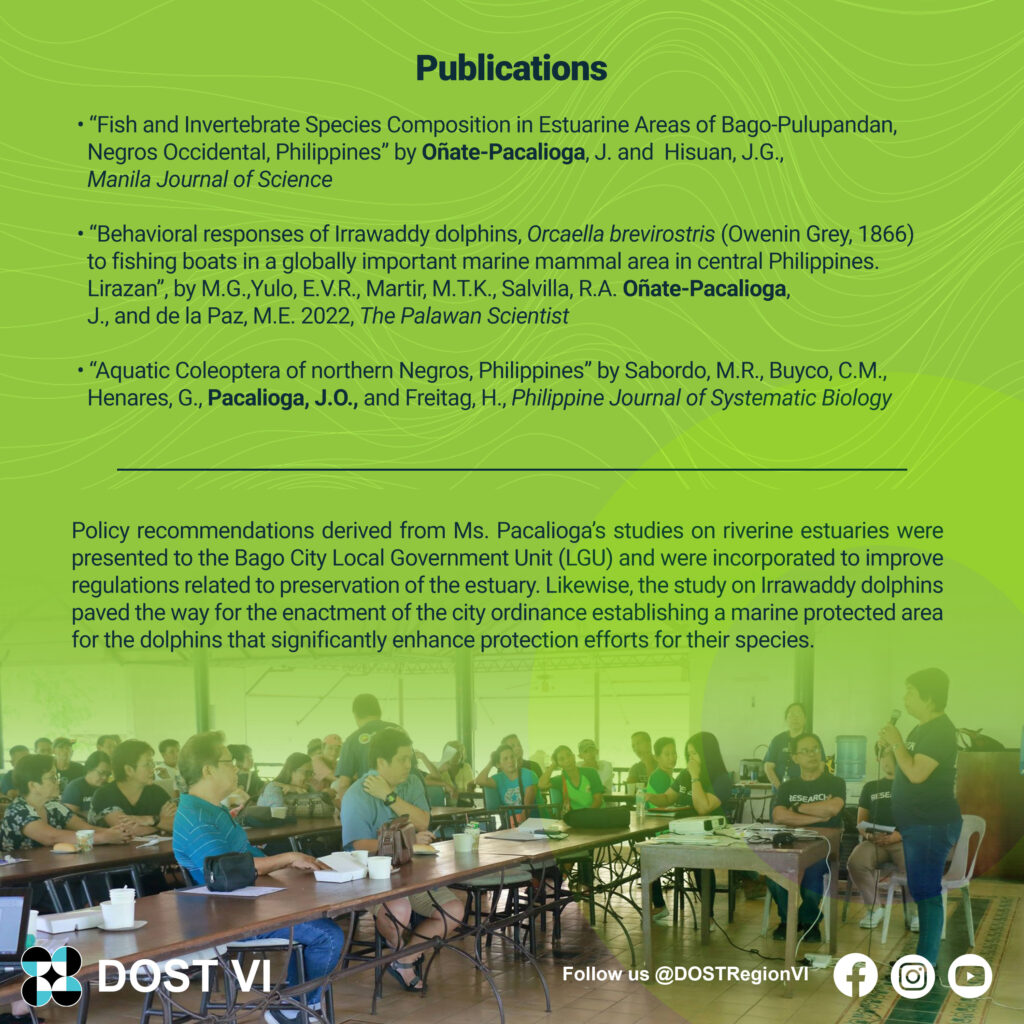
With a vast riverine estuary stretching 12.5 kilometers from its mouth, the Bago River is a valuable nursery ground for diverse fish species. Estuaries are coastal areas where freshwater from rivers and seawater from the ocean mix, creating one of the world’s most productive and dynamic ecosystems. With the lack of information on the nursery function for fish in the Philippines, a researcher has responded to the call and embraced the challenge within this specialized field.

Ms. Jessica Oñate-Pacalioga is an active member of the NRCP, an Associate Professor and Program Chairperson for BS Biology in the Department of Natural Sciences at the University of Saint La Salle (USLS), and a Senior Researcher at the Center for Research & Engagement Office. Her extensive studies focused on estuarine and coastal ecosystems, mainly fishes, invertebrates, and mangroves, and her unwavering dedication to ecological conservation paved the way for numerous studies and publications, significantly enhancing the understanding of these vital habitats.
She led a project on the Bago Riverine Estuary funded by the DOST-National Research Council of the Philippines (DOST-NRCP) through the NRCP Science and Technology Experts Pool (NSTEP) Visayas. This study has provided valuable insights into the river’s geomorphology, hydromorphology, biology, and anthropogenic activities. With the support of NRCP, DOST VI, and USLS, it revealed that the unique characteristics of the Bago River estuary create ideal conditions for fish habitats and nurseries. The riverine estuary is home to a fish assemblage consisting of 57 diverse and mostly marine species, with 39 species having juveniles. Among the fish species that are found in high abundance near the river mouth, occupying the fish nurseries, are Abo (Dendrophysa russelii), Tabal (Pomadasys maculatus), Aso-os (Sillago sihama), Salmonete (Upeneus sulphureus), and Sap-sap (Leiognathus equulus). The study also identified the presence of native tree species, particularly in the riparian vegetation which plays a vital role in controlling erosion, retaining pollutants, and providing shelter for juvenile fishes.

Aiming to improve management and conservation strategies for the riverine ecosystem through research and development, policy recommendations derived from the study were presented to the Bago City local government unit (LGU). The LGU likewise expressed their commitment to incorporate the policies for the preservation of the estuary.
Ms. Pacalioga was also involved in joint efforts to enhance Irrawaddy dolphin habitats’ conservation and management strategies in the Bago-Pulupandan coastal area through the Protected Area Management Enhancement (PAME) Project. Her work focused on providing data on a study of fisheries in the coastal waters of Bago and Pulupandan, comparing the proposed marine protected areas (MPA) sites with the non-MPA area.

The study paved the way for the enactment of the city ordinance establishing a marine protected area for Irrawaddy dolphins (City Ordinance 17-2, February 23, 2017). With the establishment of MPA, protection efforts for the dwindling population of Irrawaddy dolphins will be significantly enhanced, and the strengthened management of biodiversity and productivity of coastal fisheries will greatly benefit both the dolphins and local fishermen.
Her dedication and expertise promise to shed more light on the crucial role that estuaries portray in nurturing diverse aquatic life, sparking hope for better conservation efforts.
Explore, Innovate, and become one of the changers through R&D in making a future-ready Philippines! ((ENBLacson, KFADuspar/RDIMS)

